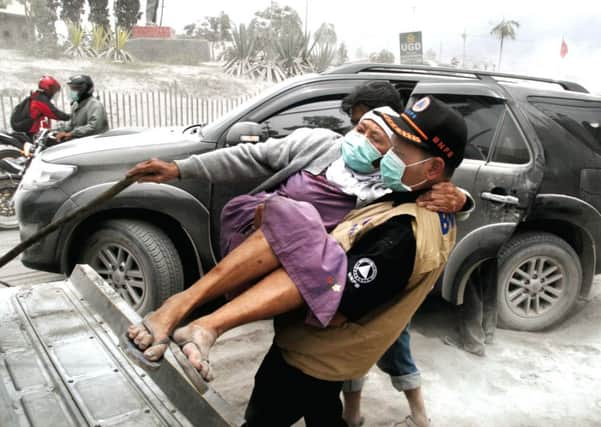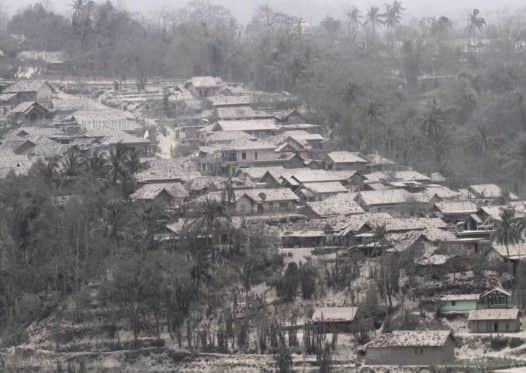Java struggles under cloud of volcanic ash


But many farmers saw the tonnes of ash blasted out by the volcano as a bounty they could not afford to pass up.
“This is a blessing of the disaster,” said Imam Choiri, a 55-year-old farmer scooping ash from the road to fertilise his vegetable plot a few miles from a still rumbling Kelud. He said locals also believe the ash keeps away pests.
Advertisement
Hide AdAdvertisement
Hide AdThe eruption of the 5,679ft (1,731m) volcano on Java island late on Thursday, was one of the most dramatic in recent years, with ash falling up to 370 miles away.


Four people, including a 97-year-old woman, died when the roofs of their homes caved in under the weight of ash. More than 100,000 were moved to temporary shelters.
Yesterday, scientists said Kelud was beginning to quieten down. It has a reputation for flaring up every decade or so. But there were fears that rain and water from its crater could spark deadly mudslides.
Troops cordoned off the area within six miles of Kelud, though many farmers sneaked back to check on livestock. Some 56,000 people remained in 89 relief camps.
“Our cows need to be milked. If they aren’t, they can get sick and die,” said Marjito, a 45-year-old man riding on a motorbike with his wife to his village three miles from Kelud.
“We have so much work to do, including running and hiding from police officers,” said his wife, Dinayah.
Six airports on Java – home to more than half of Indonesia’s 240 million people – remained closed yesterday but most are set to reopen today.
A massive clean-up was under way; millions of homes were blanketed by ash.
Advertisement
Hide AdAdvertisement
Hide AdPolice and soldiers used water cannons to clear roads under up to four inches of white ash. Supporters of political parties campaigning for April elections, distributed food, seeking to win electoral favour.
Many people wore face masks to ward off the dust.
Kelud’s last major eruption was in 1990, when more than 30 people were killed and hundreds were injured. In 1919, a blast heard hundreds of miles away killed at least 5,160 people.
Indonesia is on the Pacific Ring of Fire, a series of faultlines that run through Japan and south-east Asia. Thirty-eight of its 130 active volcanoes are on Java.
Volcanic ash ensures Java’s soil is fertile. Builders also value the ash, which makes strong cement and sells for twice as much as sand.
Scores of diggers were collecting the fresh ash yesterday, packing it into bags or on to trucks.
“Kelud is a valuable source of livelihood to me and my family,” said Harjito Huda, 30, a traditional ash miner from Ngancar village.